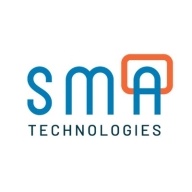

Find out in this report how the two Workload Automation solutions compare in terms of features, pricing, service and support, easy of deployment, and ROI.
| Product | Market Share (%) |
|---|---|
| IBM Workload Automation | 5.7% |
| VisualCron | 1.3% |
| Other | 93.0% |


| Company Size | Count |
|---|---|
| Small Business | 4 |
| Midsize Enterprise | 1 |
| Large Enterprise | 29 |
| Company Size | Count |
|---|---|
| Small Business | 5 |
| Midsize Enterprise | 1 |
| Large Enterprise | 5 |
IBM Workload Automation streamlines scheduling with automation and dynamic workload balancing. It integrates multiple platforms, offering efficient management across diverse systems, enhancing operational productivity.
IBM Workload Automation provides end-to-end control in managing tasks across varied platforms, supporting event-based scheduling and real-time updates. Its intuitive GUI allows seamless scripting and monitoring, facilitating integration with applications like SAP and Oracle. The inclusion of FTA agents ensures efficient local dependency management, while offering versatile scheduling options. Its capability to provide a comprehensive view, manage CPU usage, and meet service level agreements positions it as a valuable tool for large-scale operations.
What are the most important features?Industries such as government, banking, and large enterprises implement IBM Workload Automation for automated scheduling, workload balancing, and batch processing. It assists in migrating from legacy systems to web-based services, integrating with numerous applications, and managing extensive daily job lists. Key functions include offshore management and backend data collection, crucial for effective resource tracking. This adaptability enables organizations to efficiently support operations while scaling workloads as needed.
VisualCron offers task automation through a visual interface, eliminating the need for programming skills. With capabilities like alerting and variable usage, users benefit from integration with databases, timely task execution, and cross-platform operations.
VisualCron empowers users by simplifying complex workflows. It allows seamless task automation through features like interactive scheduling and role-based operations. Users appreciate its integration capabilities, replacing multiple tools with a comprehensive automation solution. The support system ensures quick assistance, making it a reliable choice for workflow visualization and task execution. However, areas like error handling and interface design require enhancements for improved user experience.
What are the key features of VisualCron?Organizations leverage VisualCron in industries like finance and logistics to automate tasks such as encryption and secure file transfers. It's also integral in managing data operations, facilitating communications between systems, and executing SQL jobs, enhancing operational efficiency across sectors.
We monitor all Workload Automation reviews to prevent fraudulent reviews and keep review quality high. We do not post reviews by company employees or direct competitors. We validate each review for authenticity via cross-reference with LinkedIn, and personal follow-up with the reviewer when necessary.